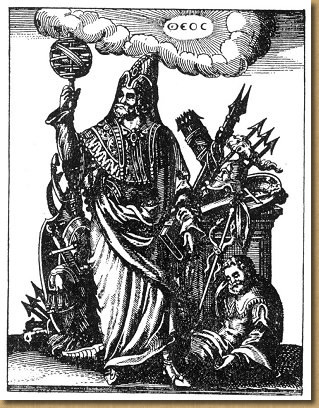
SUPPOSITIONS CONCERNING THE IDENTITY OF HERMES
Iamblichus averred that Hermes was the author of twenty thousand books;
Manetho increased the number to more than thirty-six thousand (see James
Gardner)--figures which make it evident that a solitary individual, even though
he be overshadowed by divine prerogative, could scarcely have accomplished such
a monumental labor. Among the arts and sciences which it is affirmed Hermes
revealed to mankind were medicine, chemistry, law, architecture, astrology, music,
rhetoric, Magic, philosophy, geography, mathematics (especially geometry),
anatomy, and oratory. Orpheus was similarly acclaimed by the Greeks.
In his Biographia Antiqua, Francis Barrett says of Hermes: ". . . if
God ever appeared in man, he appeared in him, as is evident both from his books
and his Pymander; in which works he has communicated the sum of the Abyss, and
the divine knowledge to all posterity; by which he has demonstrated himself to
have been not only an inspired divine, but also a deep philosopher, obtaining
his wisdom from God and heavenly things, and not from man."

Hermes Trismegistus
(Greek for "Hermes the thrice-greatest")
Master of all arts and sciences. perfect in all crafts, Ruler of the Three
Worlds, Scribe of the Gods, and Keeper of the Books of Life, Thoth Hermes
Trismegistus--the Three Times Greatest, the "First Intelligencer"--was regarded
by the ancient Egyptians as the embodiment of the Universal Mind. While in all
probability there actually existed a great sage and educator by the name of
Hermes, it is impossible to extricate the historical man from the mass of
legendary accounts which attempt to identify him with the Cosmic Principle of
Thought.
His transcendent learning caused Hermes to be identified with many of the
early sages and prophets. In his Ancient Mythology, Bryant writes: "I have
mentioned that Cadmus was the same as the Egyptian Thoth; and it is manifest
from his being Hermes, and from the invention of letters being attributed to
him. " (In the chapter on the theory of Pythagorean Mathematics will be
found the table of the original Cadmean letters.) Investigators believe that it
was Hermes who was known to the Jews as "Enoch," called by Kenealy the "Second
Messenger of God." Hermes was accepted into the mythology of the Greeks, later
becoming the Mercury of the Latins. He was revered through the form of the
planet Mercury because this body is nearest to the sun: Hermes of all creatures
was nearest to God, and became known as the Messenger of the Gods.
In the Egyptian drawings of him, Thoth carries a waxen writing tablet and
serves as the recorder during the weighing of the souls of the dead in the
judgment Hall of Osiris--a ritual of great significance. Hermes is of first
importance to Masonic scholars, because he was the author of the Masonic
initiatory rituals, which were borrowed from the Mysteries established by
Hermes. Nearly all of the Masonic symbols are Hermetic in character. Pythagoras
studied mathematics with the Egyptians and from them gained his knowledge of the
symbolic geometric solids. Hermes is also revered for his reformation of the
calendar system. He increased the year from 360 to 365 days, thus establishing a
precedent which still prevails. The appellation "Thrice Greatest" was given to
Hermes because he was considered the greatest of all philosophers, the greatest
of all priests, and the greatest of all kings. It is worthy of note that the
last poem of America's beloved poet, Henry Wadsworth Longfellow, was a lyric ode
to Hermes. . . . Go to: Thoth Hermes Index